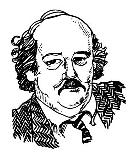(Syndicated to Kansas newspapers April 6, 2015)
 Legislators are at home on Spring Break—that’s when they have to buy their own food and drinks—until April 29, when they must put together a tax plan to finance the state budget.
Legislators are at home on Spring Break—that’s when they have to buy their own food and drinks—until April 29, when they must put together a tax plan to finance the state budget.
And this year, they’ll face for the first time the real effect of tax policies adopted in 2012 and 2013 that sharply reduced state income tax receipts. Last year, and the year before, there were general fund ending balances that could be tapped or what around the Statehouse is generally called the “Bank of KDOT”—the Kansas Department of Transportation funds; those are now running low.
It’s the real face-off. There is little left in the cupboard, state spending has been cut about as far as most legislators are willing to go, and it’s now up to deciding what taxes to raise.
Or, to just reduce spending to the level that local units of government have to pick up the costs of programs they haven’t had to shoulder in the past. That shifting of responsibilities for programs and their cost to cities and counties is what they call “local control” at the Statehouse, a good thing because it sounds nice, and saves the state money.
But…it all comes down to taxes…and who levies and pays them.
It’s that simple.
